A one cent piece dated 1955 is one of the series known to collectors as wheat pennies. But are these coins valuable? That’s what we’re here to find out.
We’re going to investigate the 1955 Wheat penny value across its different varieties. We’ll explore its design and history. And we’ll find out what separates a run-of-the-mill coin from something truly special.
So if you’re ready to find out more, step this way!
1955 Wheat Penny Details
- Category: Lincoln Wheat pennies
- Mints: Philadelphia, Denver, San Francisco
- Total mintage: 938,825,700
- Obverse designer: Victor David Brenner
- Reverse designer: Victor David Brenner
- Edge: Plain
- Diameter: 19.00 millimeters
- Composition: 95% copper, 5% tin and zinc
- Weight: 3.11 grams
1955 Wheat Penny Value Chart |
|||
| Mint mark | MS63 | MS65 | MS67 |
| 1955 (P) No Mint Mark Wheat Penny Value* | $9 | $25 | $775 |
| 1955 D Wheat Penny Value* | $6 | $20 | $525 |
| 1955 S Wheat Penny Value* | $5 | $16 | $165 |
| PR63 | PR65 | PR67 | |
| 1955 (P) Proof Wheat Penny Value | $15
Cameo: $20 Deep cameo: $75 |
$35
Cameo: $60 Deep cameo: $300 |
$70
Cameo: $165 Deep cameo: $600 |
*Values shown are for coins graded red (RD).
1955 Wheat Penny Values and Varieties Guides
1955 (P) No Mint Mark Wheat Penny Value
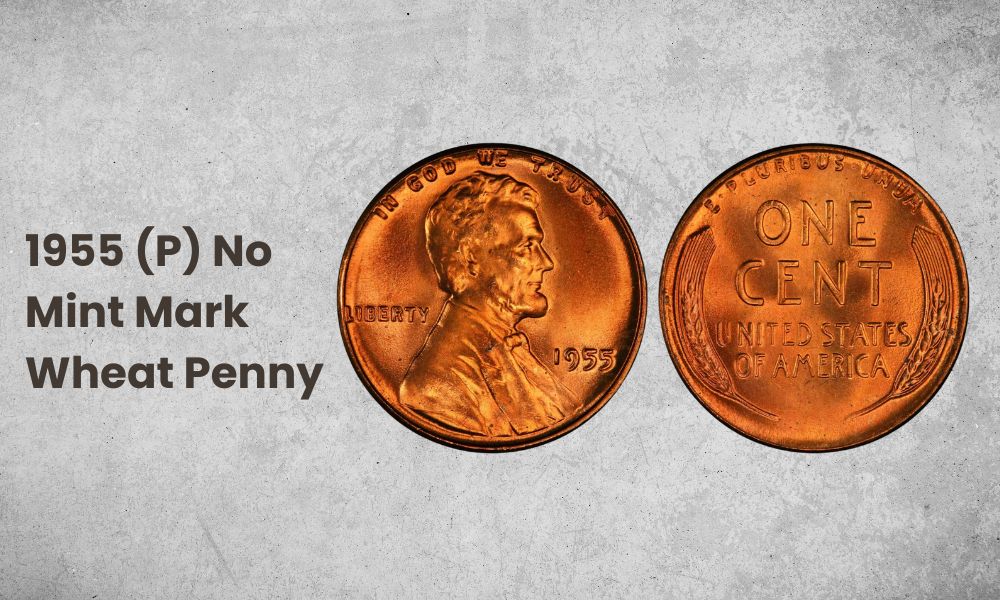
- Type: Lincoln Wheat Penny
- Edge: Plain
- Mint mark: None
- Place of minting: Philadelphia
- Year of minting: 1955
- Face value: $0.01 (one cent)
- $ price: $0.01 to $1,750
- Quantity produced: 33,058,000
- Designer: Victor David Brenner
Some 1955 Wheat pennies have what’s known as a mint mark. That’s a small letter indicating the location of the mint facility where they were struck. But if your penny was minted in Philadelphia, it won’t have a mint mark.
Over 33 million Wheat pennies were struck in Philly in 1955. So even more than 60 years later, they’re not particularly rare. Pennies in circulated condition are usually worth little more than their face value.
But those graded red and in uncirculated condition can be worth considerably more. Exactly how much more depends on their condition and quality.
Uncirculated coins are known as “mint state” and graded from 60 to 70, with 70 being a flawless example. A 1955 Philadelphia Wheat penny designated red and graded MS60 is valued at around $3. That increases to $9 at MS63 and $25 at MS65.
The finest examples to have been graded by independent coin assessors the PCGS are rated MS67+. To date, nine coins of this quality have been graded, and they’re each valued at $1,750.
1955 D Wheat Penny Value
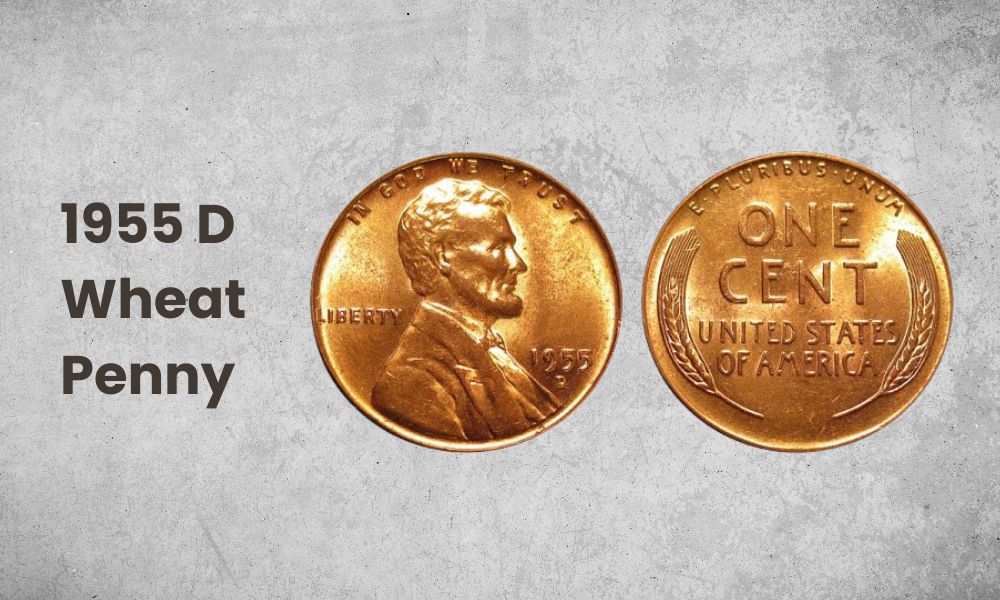
- Type: Lincoln Wheat Penny
- Edge: Plain
- Mint mark: D
- Place of minting: Denver
- Year of minting: 1955
- Face value: $0.01 (one cent)
- $ price: $0.01 to $6,000
- Quantity produced: 563,257,500
- Designer: Victor David Brenner
If your 1955 Wheat penny has a small “D” below the date, it was minted in Denver. A vast number of coins have the same pedigree: well over half a billion were struck there that year.
In circulated condition, then, values are about the same as for Philadelphia coins. Unless there’s an interesting error, a circulated 1955 Denver penny won’t be worth more than a few cents.
You can get your hands on an attractive red, mint state coin for only a few dollars too. An example graded MS60 is valued at $2, increasing to $25 at MS65.
The finest examples to have been graded by the PCGS are again MS67+. But despite the higher mintage in Denver, there are fewer top quality examples than among Philadelphia coins. Only six coins have been graded MS67+, and they’re each valued at $6,000.
1955 S Wheat Penny Value
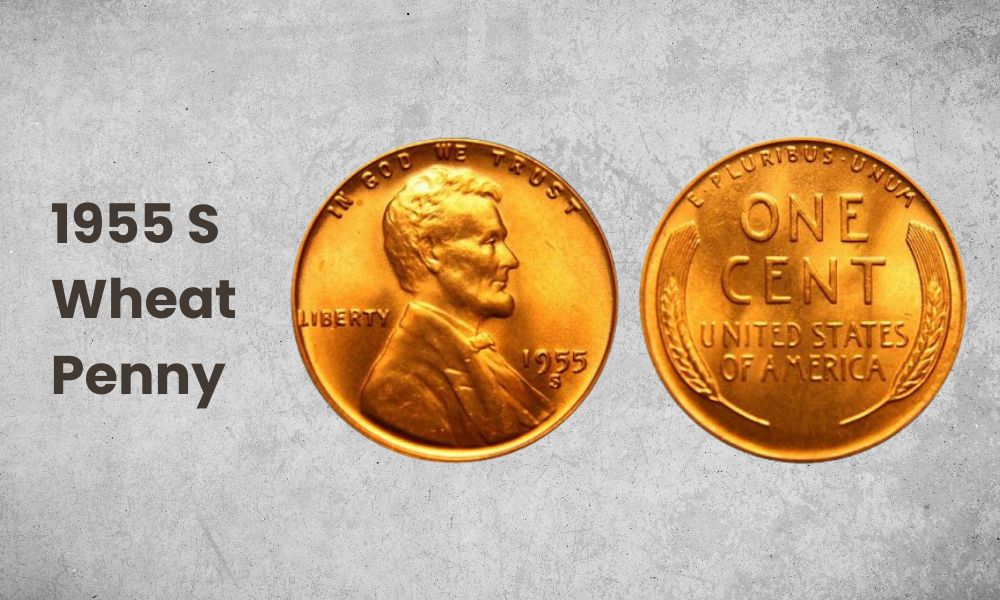
- Type: Lincoln Wheat Penny
- Edge: Plain
- Mint mark: S
- Place of minting: San Francisco
- Year of minting: 1955
- Face value: $0.01 (one cent)
- $ price: $0.01 to $10,000
- Quantity produced: 44,610,000
- Designer: Victor David Brenner
If there’s a small “S” beneath the date on your 1955 Wheat penny, it was minted in San Francisco. Just over 44 million coins were struck there that year. That made the facility more prolific than Philadelphia, but much less so than Denver.
As with other 1955 Wheat pennies, coins in circulated condition won’t usually fetch more than five cents. But as ever, red, uncirculated examples are considerably more valuable.
Values for mint state San Francisco coins range from $2 at MS60 to $16 for a “gem quality” MS65. And the finest known example is better than the best from Denver or Philadelphia. The PCGS has graded a single 1955 San Francisco Wheat penny at MS68, and valued it at $10,000.
1955 (P) Proof Wheat Penny Value
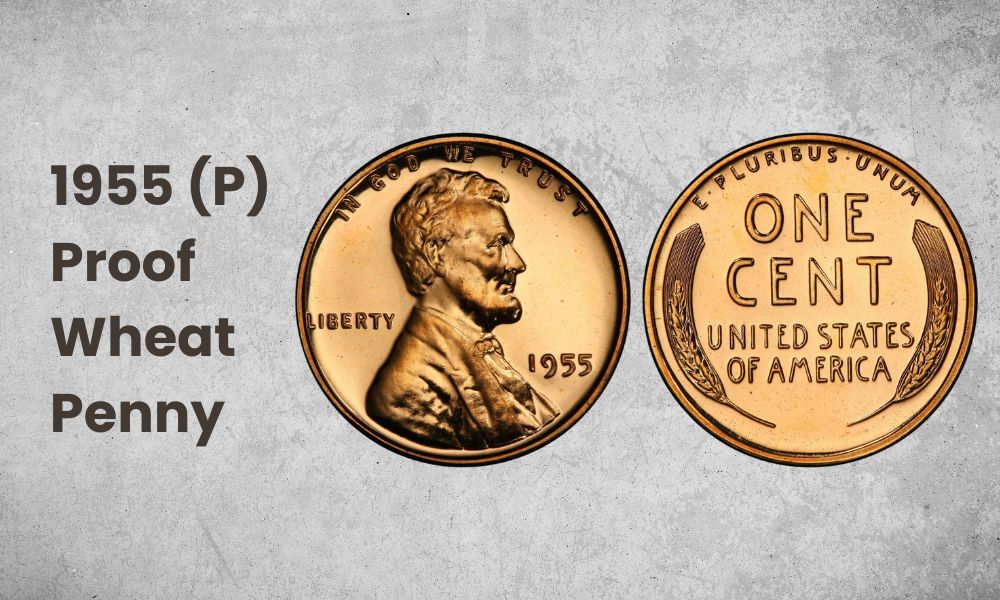
- Type: Lincoln Wheat Penny
- Edge: Plain
- Mint mark: None
- Place of minting: Philadelphia
- Year of minting: 1955
- Face value: $0.01 (one cent)
- $ price: $10 to $14,000
- Quantity produced: 378,200
- Designer: Victor David Brenner
Proof coins are those prepared and crafted to the highest standards. They’re struck on carefully polished planchets with specially created dies. And they’re destined for coin archives or collectors.
Proof coins aren’t minted for every denomination every year. But there are 1955 Wheat penny proofs – 378,200 of them, in fact. These were struck at the Philadelphia mint. And like the business strikes from the same mint facility, they have no mint mark.
You might imagine that the higher quality and lower production runs would make these very valuable. But because these coins were always considered something special, they were usually stored carefully. As a result, they’re not particularly scarce, especially in lower grades.
A 1955 proof wheat penny graded PR60 could be yours for around $10. But at higher grades, they’re harder to find – and as a result, more expensive.
Some proof coins also carry the “cameo” or “deep cameo” designations. These are awarded to coins that have an attractive contrast between glossy fields and frosted design elements. The contrast for a deep cameo coin is particularly intense.
Both designations increase a coin’s value. A 1955 proof Wheat penny graded PR66 is worth about $50. That increases to $80 if it’s a cameo, and $550 if it’s a deep cameo.
The most valuable 1955 proof Wheat penny is a single example graded PR69 and with the deep cameo designation. That’s valued at $14,000.
Also Read: Top 20 Most Valuable Old Pennies Worth Money (Penny Collection)
1955 Wheat Penny History
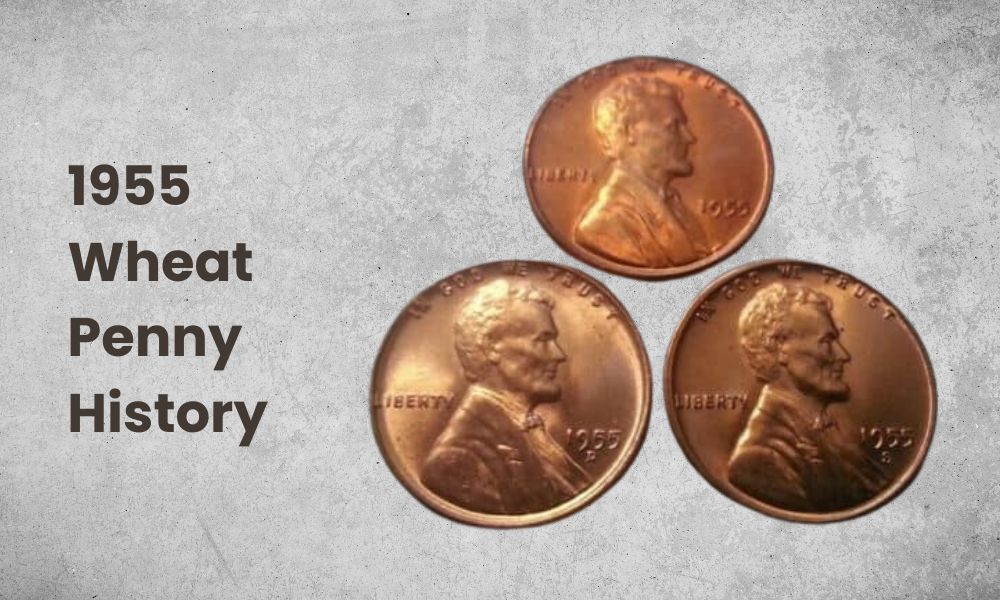
Lincoln pennies – so named because of the image of the former president on their obverse – have been minted since 1909. The Wheat penny minted in 1955 was part of that long series. And it took its name from the design on the reverse – two ears of durum wheat.
That design was the first to appear on the back of the Lincoln cent. It would eventually be replaced in 1959, 150 years after Lincoln’s birth. The new image was that of the Lincoln Memorial in Washington D.C.
The first Wheat pennies marked a moment in US numismatic history. It was the first time the image of a real person had appeared on an American coin. Until then, the images had been of legendary figures, like Lady Liberty.
At one time, the idea of putting a real person on coins would have been considered unseemly. But 1909 was to mark the centenary of Abraham Lincoln’s birth, and public sentiment was changing. The idea of honoring Lincoln on the nation’s coins gained strong popular support.
The first Wheat pennies were struck that year, and they were made of 95 per cent copper. That changed in 1943, when it became necessary to release copper for the war effort. The pennies that year were instead made from zinc-coated steel.
The change lasted for a single year, but freed up enough copper to manufacture 1.25 million shells. In 1955, the Wheat penny was again being made from its traditional 95 per cent copper. The remaining 5 per cent was comprised of zinc and tin.
1955 Wheat Penny Grading
The 95 per cent copper in the 1955 Wheat penny means the coins change color over time. That gives rise to three different color categories.
When new, copper has a warm red hue. If your coin has kept that shade across at least 95 per cent of its surface area, it’s graded “red”. That’s often abbreviated to “RD” in coin catalogs.
If it’s brown across at least 95 per cent of the total surface area, it’s graded “brown”, with the abbreviation “BN”. And if the color is anywhere in between, it’s graded “red and brown”, or RB.
Red coins are generally the most sought after and command a premium. Red and brown are the next most valuable, and brown are the most affordable.
This YouTube video from CoinOpp tells you more about color grading Lincoln pennies.
1955 Wheat Penny Errors
1955 Wheat Penny Double Die Obverse
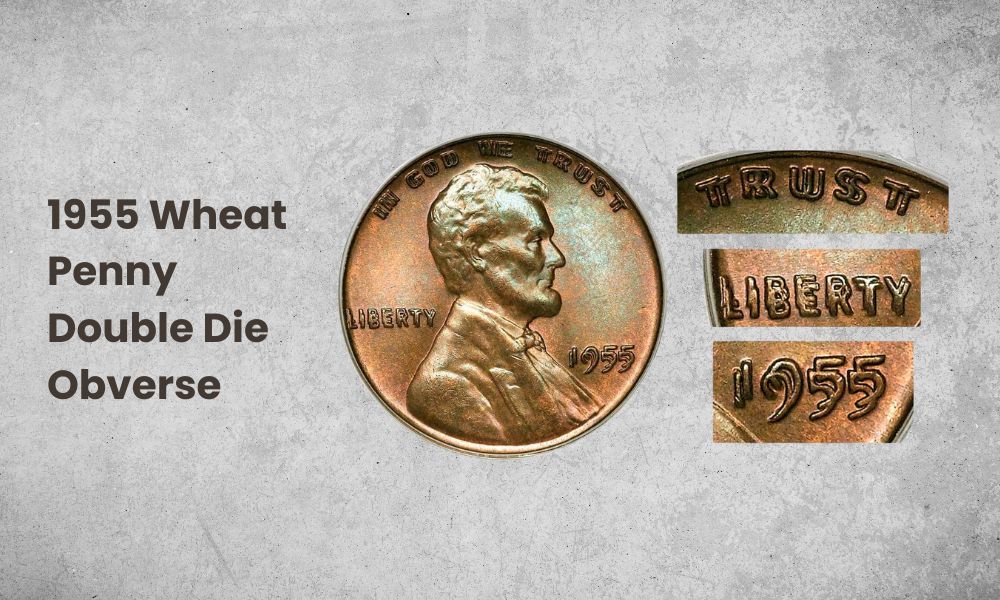
The 1955 Wheat penny with a double die obverse is one of the most famous error coins in existence. Some 40,000 of them were struck in a single night at the Philadelphia mint. But how was the error made – and how can you spot it?
Double die errors originate during the production of the die used to strike the design onto the coins. The die first has to have the image pressed into it, which is done using a hub. The hub usually has to strike the die several times to capture every detail of the design.
If the die moves, even slightly, between strikes of the hub a doubled image is produced. That is then transferred onto the coins struck by the die.
If the doubling appears on the die used for the obverse design, it’s referred to as a “double die obverse” or “DDO”. If it’s on the reverse, it’s a “double die reverse” or “DDR”.
The coins struck that night in Philadelphia show doubling on the obverse. It’s particularly apparent on the date and the other text. There’s also some loss of detail on Lincoln’s bust, though this is harder to identify.
Around 22,000 of these double die obverse coins were released into circulation before the error was spotted. Very few are known to exist in mint state.
And because this error is so famous, there are lots of counterfeits on the market. So don’t part with big money for one of these coins unless it’s been professionally graded. Look for certification from one of the top grading agencies, like the PCGS or NGC.
So just how much is one of these coins worth?
A brown 1955 Wheat penny with the double die obverse error sold at auction in March 2019 for $1,500. Today, the PCGS values a red penny with that error and graded MS60 at $3,250. At MS65, that value soars to $52,500. And the two coins graded MS65+ by the PCGS are currently valued at a whopping $288,000.
1955 Wheat Penny Poor Man’s Double Die
Not all apparent double die errors are created equal. And while you might think you’re in the money if you spot evidence of doubling on your 1955 Wheat penny, you’ll need an expert to check. That’s because there are also a number of coins that have doubling for a different reason.
Coins known as the “Poor Man’s Double Die” also have doubling on the obverse. But in this case, it’s caused not by a defect during the die manufacture, but in its deterioration over time.
There are many more of these coins in circulation, with evidence of doubling most noticeable on the date. But despite their similar appearance, even high quality examples are generally worth only a few dollars.
This YouTube video from JBCoinsInc provides more information on 1955 Wheat pennies with the double die obverse error.
FAQs
Is a 1955 D penny rare?
Over 563 million pennies were struck in Denver in 1955. So a 1955 penny with the D mint mark isn’t necessarily rare. And most coins in circulated condition will be worth only about 5 cents.
Finding a good quality, uncirculated example, though, is much harder. Mint state, red coins can be worth anything from $2 at MS60 to $6,000 for the top grades.
What is the error on the 1955 penny?
The most famous error on the 1955 penny is the double die obverse. It’s easy to spot, with distinctive doubling on the coin inscriptions and the date. And real examples are very valuable.
But watch out for fakes. And note that doubling can also appear as a result of the die used to strike the coins deteriorating over time. That’s quite different from a “true” double die obverse, where the doubling was part of the die from the moment it was made.
If you’re thinking of spending a lot of money acquiring a 1955 Wheat penny with double die obverse, look for a coin that’s been professionally graded. Certification from coin services like the PCGS, NGC or ANACS will give you the confidence that you’re buying the real thing.
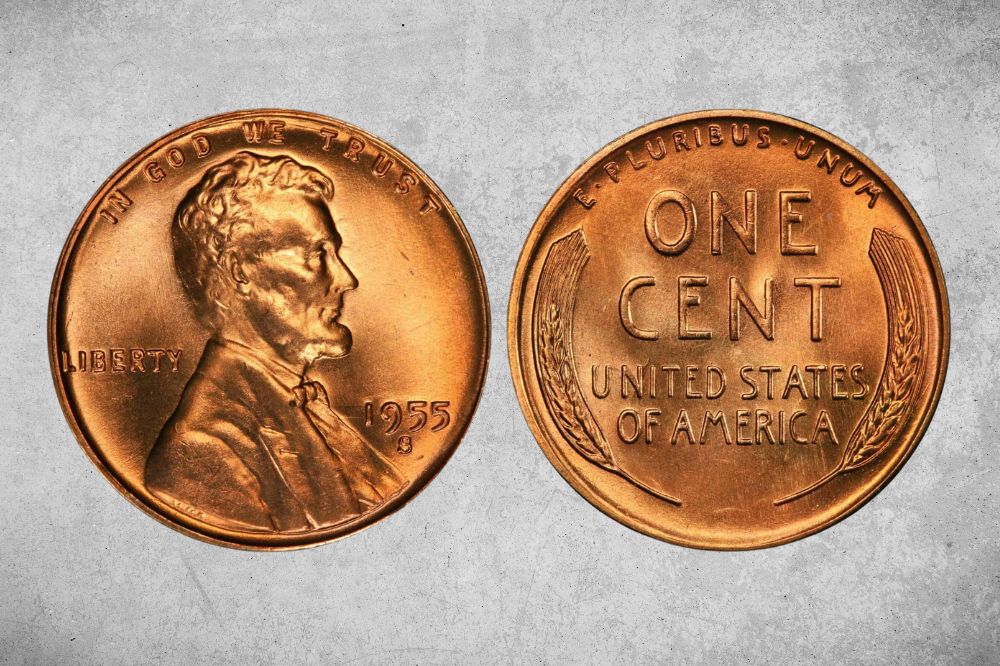
I have 40 1955 pennies and I seem to believe that half of them, have a misprint on them,i
would love to share them with you,possibly sell them to you,and they all are and magnificent shape and the color are nice and shiny on all.
HI …I HAVE 2 1955.D.AND.1955.S.I WOULD LIKE TO SAKE.BUT WHERE. I GO SALE AND WHO TO TO BUY MY 1955.WEATPENNY PLEASE LET ME KNOW WHEN YOU SEE MY MSG.
THANKS
Hello,, I have one 1955 penny wanted to have it checked and professionally granded by the best , can you please tell me whom should I send this to and how much will it cost me , I would greatly appreciate your thought in this matter ,, I enjoy your videos thx for all your notice sincerely cindy
I have a 1955 wheat penny without a mint,how much would or could be worth and in nice condition?
I have a silver 1955 wheat penny with no mint mark what is it worth?
A lot!
But I will give you a nickle for it.